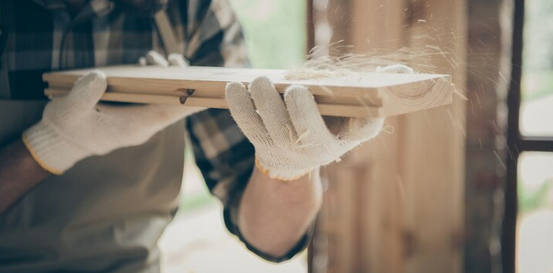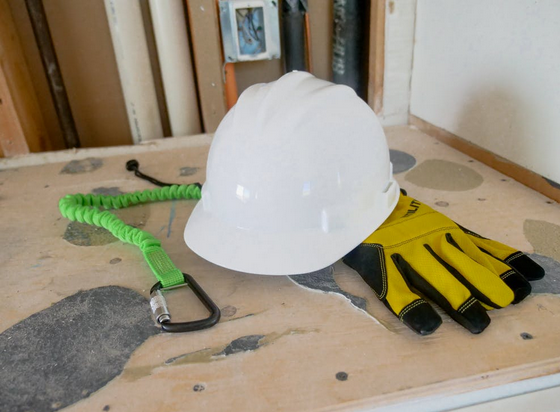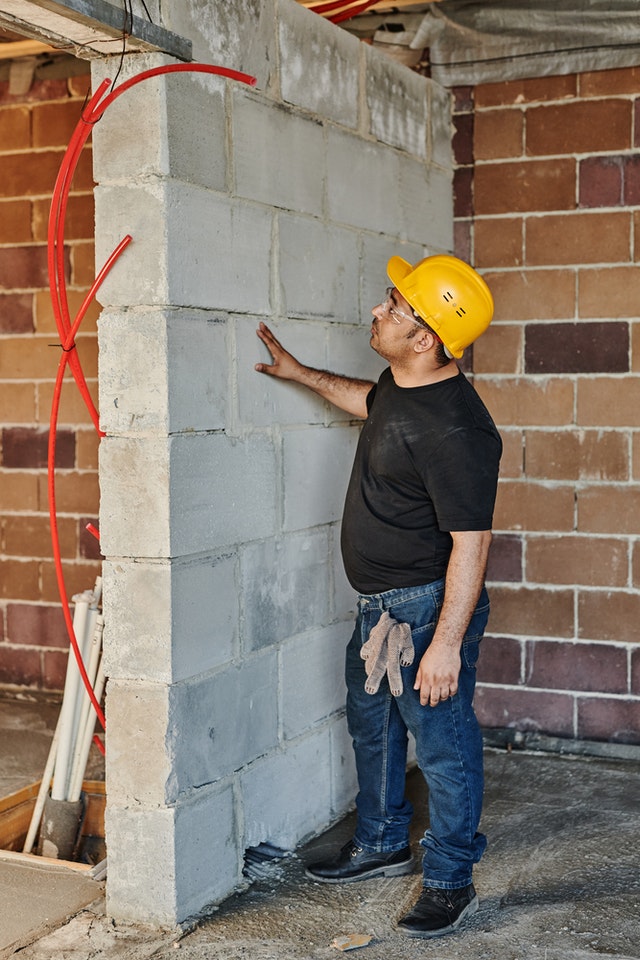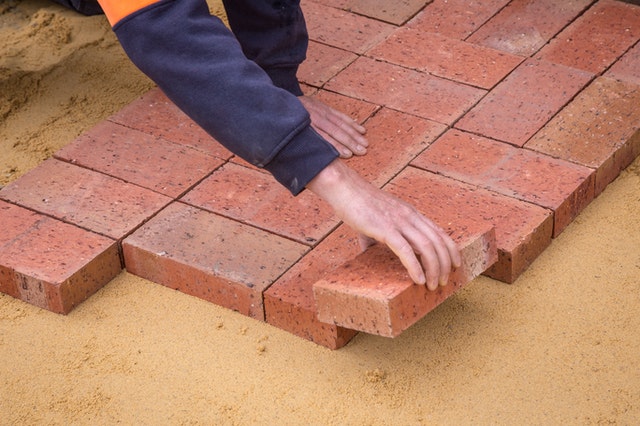What to Know About Getting Drywall Dust Out Of Your Throat

Inhaling drywall dust is pretty common when working with this type of construction material and it can be very unpleasant as well. In the following article, we will explore why this happens and the symptoms of drywall dust in the nose and throat. We will also provide some advice on what to do if you believe you have inhaled drywall dust.
Inhaling silica dust produced when working with drywall panels can cause a variety of unpleasant conditions, including COPD, or Chronic Obstructive Pulmonary Disease.
These particles are even smaller than cigarette smoke particles and can make their way into the bronchial tubes and lungs causing inflammation and irritation wherever they go.
Some of the symptoms of silica dust in the lungs include:
- Blood in cough
- Shortness of breath
- Pain on deep breathing
- Chest tightness
- Wheezing
- Fatigue after exercise
- Loss of appetite

Ways to clear the lungs
Steam therapy — is a very effective way to clean the lungs naturally and effectively. This method involves preparing a large bowl with hot water and even spices like eucalyptus and rosemary oil. Not only does this open up the passageways of the lungs, but it helps to drain the lungs of mucus, carrying silica particles with it.
- Controlled coughing.
- Exercise.
- Drain mucus
- Anti-inflammatory foods.
- Green tea.
- Chest percussion.


Reasons Why You Should Get Drywall Dust Out of Lungs:
1. Saves your life:
Drywall dust is especially harmful to the lungs and can cause health complications later in life. It contains over 100 known irritants and silica and crystalline silicic acid are among them. Because of the presence of known carcinogens, removing drywall dust from the body is important.
2. Fixes the problem permanently:
The aforementioned methods of drywall dust removal are the best way to remove dust from the lungs permanently and thereby avoiding any further complications.
3. No more allergies:
After the drywall dust has been effectively removed from your lungs you will feel better and be able to function better as well.
Prevention of Drywall Dust Allergy
Allergic reactions that occur as a result of drywall dust often happen because of carelessness rather than some medical condition. It is important to understand this threat and do some things to prevent it from happening to you.
Safety Tips for Working with Drywall
Construction workers, interior designers, painters, carpenters and anyone else working close to drywall panels are vulnerable to the effects of drywall dust. Because they are exposed to this substance in greater quantities than regular folks, people who work with the drywall are always at greater risk.
Safety precautions should always be the most important priority when handling drywall and plasterboards.
Here are some things to keep in mind while Working with Drywalls:
Masks — it is imperative to protect your breathing passageways with an effective face mask that will filter out any harmful particulate matter. Drywall work creates a lot of dust and this can be detrimental to the lungs. We recommend using the N95 face mask when working with drywall.
Protective Eyewear — it will be equally important to protect the eyes from dust. Dust that becomes lodged in the eyes can cause vision problems and other damage. Wash your hands regularly as well so that dust is not transmitted from your hands to your eyes.
Gloves and boots — you should always wear protective eyewear and footwear when handling potentially hazardous materials and substances. This way you can keep your body free from contamination.
Long sleeve clothing — long sleeve clothing with tight cuffs will keep your body free from dust.
Proper tools — no project should be started until a full account of the tools available to complete the task has been made. Some tools will cause more dust than others. If you use the right tools in the right way, much of the damage can be avoided.

What Causes Drywall Dust Inhalation?
Drywall is made of a special substance called gypsum along with other materials like glue. When the drywall is broken down these substances are released into the air. If these substances enter the lungs, they can cause serious damage. Breathing in these substances can cause health issues.
In the following section of this article, we will explore some ways to get drywall dust out of bronchial tubes and lungs.
1. Take a deep breath and cough:
This is a very effective method of dislodging foreign particles from the lungs. But if you have already tried this and it hasn’t worked, stop and move on to something else. To make a controlled cough breathe very deeply and hold the breath for about a second or two. Now release the breath in a series of controlled coughs until the foreign object feels like it has been dislodged from the lungs. The foreign matter may be dislodged from the throat and move down to the stomach where it can be expelled through vomiting. Then, take a few deep breaths and lighter coughs to ensure that everything has been properly expelled.
2. Gargle with salt water:
Saltwater is another good way to rid the body of toxins and irritants. Saltwater breaks the mucus lining and all the dust particles can be dislodged from the throat. Prepare your throat cleaning potion by mixing a teaspoon of salt in a half-liter of water and mixing it thoroughly. Swish this around in your mouth and gargle for as long as you can, allowing that solution to reach far back in the throat where it can take action. Repeat this about three times over the next 24 hours.
3. Take a shower or bath:
Hot water and steam are great at cleaning out the lungs and allowing the body to naturally expel contaminants from the respiratory tract. If you can, stay in the shower for a full 20 minutes allowing the warm water to relax your mind, body, and breathing. You will soon feel the mucus begin to loosen and this should take the drywall dust with it.
If you suffer from asthma, then you should avoid taking a warm shower as this could trigger an asthma attack. Furthermore, never use water that is any more than comfortable, hot water can dry the skin and hair by stripping them of natural oils.
4. Drink warm herbal tea:
Hot liquids are another good way to warm the insides of the body and allow the body’s processes to begin working. With this in mind, drinking some herbal teas can not only improve breathing and clear the airways of the body. You can choose from eucalyptus, mint, lavender, or chamomile. Any herbal tea would be effective at clearing the lungs.
5. Use a humidifier:
This is a great way to control the dust and allow your body to expel this foreign contamination easily. Coughing and vomiting can also help to remove the substances from the body. Just make sure that the water from the humidifier is not going to irritate your throat. A good setting is about 70% humidity.
6. Rinse your mouth:
This is another good way to remove the dust that has become stuck in your throat and mouth. It is also a good way to prevent dust from traveling further into the body. Gargling salt water as mentioned is the best way to ensure that all foreign substances are expelled from the body. If you don’t have any salt on hand, you can use baking soda as well.
Conclusion
Any signs of irritation, coughing, or choking after working around drywall dust should be taken seriously. Follow the advice found here in this article to reduce the likelihood of developing medical conditions.
To avoid drywall dust allergies for you or your pets, hiring professionals is the best option ever. Expert arrive with the all the safety equipment and you don’t have to be near the work station. So, call DMV Drywall Repair Service Woodbridge – VA at (703) 382-6372 and get your drywall needs done.


